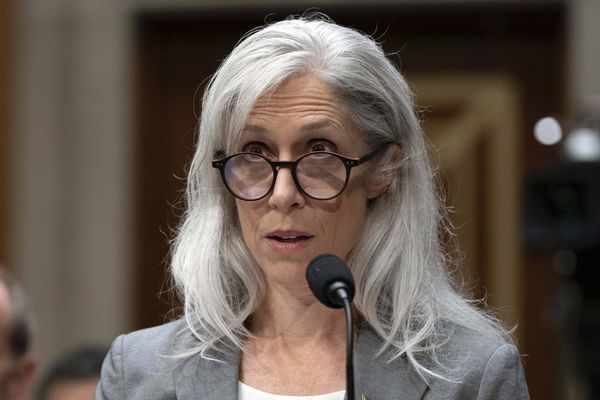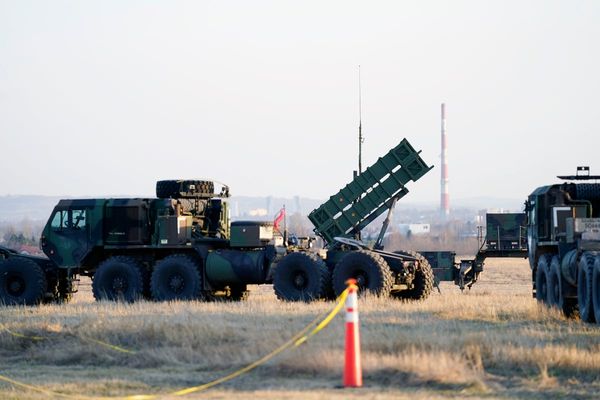Tight labor and supply chain bottlenecks are rattling businesses, but companies are responding by opening the taps to new capital spending. And the big capex stream should act as a tailwind for the U.S. economy in the next few years.
The Covid-19 pandemic — and more recently Russia's invasion of Ukraine — galvanized companies to bring advanced manufacturing and supply chains back to the U.S. Labor shortages also have spurred capex spending as firms try to boost productivity.
Where will you see the money being spent? Economists expect that 2022 will be a big year for capital expenditures on semiconductor manufacturing and cloud computing. Taiwan Semiconductor Manufacturing plans to build a factory in Arizona. Rival Intel expects to build multiple chip fabricating plants in the U.S. over the next few years.
Also, a long-awaited ramp in spending on 5G wireless networks finally appears to be happening. The surge in e-commerce has sent retail companies scrambling to build fulfillment and shipping centers. Automakers are starting to convert factories to making electric vehicles.
And finally, companies of all kinds are spending more on labor-saving, industrial plants and equipment, including robots.
"Coming out of this pandemic one of the things here to stay is labor shortages," economist Ed Yardeni told Investor's Business Daily. "Businesses are scrambling to come up with alternative ways to increase the productivity of the (workers) they have."
Capex: A Lot More To Increase Production
Yardeni says nondefense capital goods orders, excluding civilian aircraft, have been rising in record territory since November 2020. They were up 21.6% over the 24 months through January. New orders for industrial, metalworking and material handling machinery have shot up.
"If you think about the technology revolution since the early '90s, there's a lot more now to increase productivity, not just PCs, word processing and spreadsheets," Yardeni said. "Most industrial equipment these days is high-tech gear that embodies automation and robotics. And with cloud computing and other innovation, every business is using technology now to increase productivity. You want to own (stocks) that use technologies to do what they do better."
At credit rating firm Moody's Investor Service, economist Mark Zandi says capital spending growth will be particularly strong in transportation and manufacturing sectors.
"We expect 8.5% growth in real nonresidential business fixed investment in 2022," Zandi said in an email. "This will be the strongest growth since 2012, coming out of the financial crisis. Supporting business investment will be strong corporate earnings growth, low cost of capital and the need to focus on labor-saving technology."
He added that companies will invest in supply chains "to address the vulnerabilities that have become evident during the pandemic."
Meanwhile, rising inflation looms as a wild card. Companies may speed up capital spending to get ahead of the curve.
Spending To Cut Reliance On Labor
Stephen Stanley, chief economist at Amherst Pierpont Securities, has a similar view. He says labor shortages weigh heavily on many companies.
"Firms will be looking to invest in plant and equipment in ways that lessen their reliance on labor, which has become scarce and more expensive," he told IBD.
"It could be electronic menus in restaurants, more powerful equipment on a factory floor or a more efficient physical layout of a plant," he said. "There are many ways that a firm can use physical plant and equipment to lessen its need for additional workers."
Stanley added: "We should see pent-up outlays for motor vehicles as that sector restores normal production."
The auto industry will benefit as electronic chip shortages ease and production of gas-powered and hybrid vehicles rebounds. But a bigger inflection lies ahead. As the market shifts to electric vehicles, automakers will need to convert existing factories into EV production.
Ford Motor, for example, is considering upping its investment toward EVs by $10 billion to $20 billion over the next five to 10 years.
Manufacturing Returns To The U.S.
Another goal affecting capital spending is moving production back to the U.S. from overseas. Morgan Stanley expects spending on electrical equipment, industrial machinery and robotics to increase.
"We see supply chain investment driving some of the best capex and automation growth in a decade over the next several years," Morgan Stanley said in a report. "We believe normalizing supply chains and lead times will require spending around $65 billion on equipment capex with the majority of the incremental spending taking place over the next 3 to 5 years, representing 7.5% growth vs. historical levels of 3% to 5%."
Robot orders boomed in 2021, according to the Association for Advancing Automation. Companies in North America ordered 39,708 robots, up 28% over 2020.
Sectors with the fastest-growing demand for robots included metal fabrication, food and consumer goods, electronics and automotive. Robot orders had dipped in 2018 and 2019. The drop came amid trade tensions with China, a slowing U.S. economy and a drawback in automotive-related orders.
At Bank of America, economists expect capital spending on industrial automation to grow. With higher capital spending, companies also will aim to become more agile and flexible.
"Given hiring issues and wage inflation, we think corporate investments into automation and cloud platforms will increase significantly," a BofA report said. "Wage inflation has historically served as a catalyst for companies to invest in productivity-enhancing initiatives. This could include industrial automation and cloud computing spend, and we see Amazon and Alphabet well positioned."
Cloud Computing Capex Pops
Cloud computing giants Amazon.com, Microsoft and Google parent Alphabet continue to build out huge internet data centers. In the cloud services market, businesses rent computer servers and data storage by the hour, week, month or year.
U.S. capital spending on computer servers, data storage and networking gear in cloud data centers will jump 42% in 2022 to $110.6 billion, forecasts Susquehanna Financial.
Capex at Amazon Web Services, the cloud unit of the e-commerce giant, rose 33% in 2021 to $22 billion, Bank of America said. BofA estimates capital spending at the unit will grow 38% in 2022 to $30.5 billion. AMZN stock was down 2% in 2022 through Thursday.
There's more. Facebook parent Meta Platforms has forecast 2022 capital spending in a range of $29 billion to $34 billion, which would be up $13 billion at the midpoint, or about 70% year over year. The social network platform is investing in data center space, computer servers, network infrastructure and office facilities.
Facebook aims to transition to the metaverse — a next-gen internet filled with 3D digital worlds that incorporate virtual reality or augmented reality. But for investors, there's a price to pay. With the huge capex jump, Facebook's 2022 per-share earnings are projected to grow only 2% vs. 14% last year. Facebook stock has retreated 34% in 2022 through Thursday.
Best Capex Environment For Telecoms
Meanwhile, wireless service providers are building out 5G networks. Credit Suisse expects 2022 capital spending to hit a record high of $39.4 billion.
While T-Mobile US forged ahead in 5G, AT&T and Verizon Communications delayed big investments until they obtained midband radio spectrum. Dish Networks is a newcomer in the 5G wireless battle. Also, Verizon and T-Mobile aim to expand into 5G broadband services to homes. T-Mobile stock has gained 10% in 2022.
At Jefferies, analyst George Notter says 2022 shapes up as "the best telecom service provider capital spending environment of the past 20 years — literally since the internet bubble."
"As we dig into operators' Q4 capex spending commentary and 2022 guidance, it's apparent that the capex environment is inflecting positively," he said in a report to clients.
One reason is that telecom companies are investing in other areas, along with 5G wireless.
Led by AT&T, telecom companies are ramping up fiber-to-the-home broadband services to take on cable TV companies. Lumen Technologies, Frontier Communications and Consolidated Communications also are expanding buildouts of fiber to homes.
In 2022, AT&T expects capital spending to rise about 19% to $24 billion. It projects the same amount of capital spending in 2023 amid investments in 5G networks and fiber-optic broadband services.
Semiconductor Capex Booms
But it was semiconductor companies that stood out for capex amid global chip shortages during the pandemic. Industry capital spending jumped 34% to $152 billion in 2021, estimates research firm IC Insights. It forecasts a 14% rise in semiconductor capital spending in 2022.
Taiwan Semiconductor, the biggest contract manufacturer, plans to hike 2022 capex about 40% to a whopping $42 billion. Further, it has committed to $100 billion in spending over the next three years to ramp up production.
Then there's Intel. It's boosting capital spending to build new chip foundries over the next few years in Ohio and Arizona.
Intel plans to take on Taiwan Semi in the contract manufacturing business. At the same time, it aims to catch up in chipmaking technologies for its own products.
For 2022, Intel has forecast capital spending of $27 billion, with "capital intensity" — capital spending divided by revenue — of 25%. That's up from the usual 20%. In 2023 and 2024, Intel projects capital intensity will rise to 35%.
Stocks Punished For Higher Capital Spending
Some analysts say the probability of success is uncertain. And Intel stock expects to generate no free cash flow until 2025.
"If you're investing in INTC now, you're investing for 2025, when they expect to have regained process superiority and the achievement of a goal that far ahead remains uncertain," Raymond James analyst Chris Caso said in a note.
Caso went on to say: "In the meantime, investors need to be willing to forgo free cash flow for the next three years and be willing to invest through the next likely downturn. We continue to think that remains a big ask for investors."
In fact, many investors view capex as a double-edged sword. When e-commerce firm Shopify announced a big hike in capital spending recently, its stock took a hit.
While higher capex may unleash growth down the road, investors worry over near-term pain.
Getting The Big Picture
But investors may be missing the big picture. The ripple effects of capex spending will magnify the benefits.
As Intel builds new chip factories, makers of semiconductor manufacturing equipment such as Applied Materials also will get a boost.
Facebook's plan to target the next-generation internet called the metaverse adds another feature to the capex picture. Makers of computer servers, networking gear and other data center infrastructure could benefit.
Meanwhile, one of those companies could be computer networking giant Arista Networks. It's battling Cisco Systems in the hyperscale data center market.
There also could be near-term upside for fiber-optic product makers such as Corning, Ciena and Lumentum Holdings as fiber-to-the-home buildouts expand. In addition, 5G business apps will need landline fiber network connections in urban areas.
Follow Reinhardt Krause on Twitter @reinhardtk_tech for updates on 5G wireless, artificial intelligence, cybersecurity and cloud computing.







